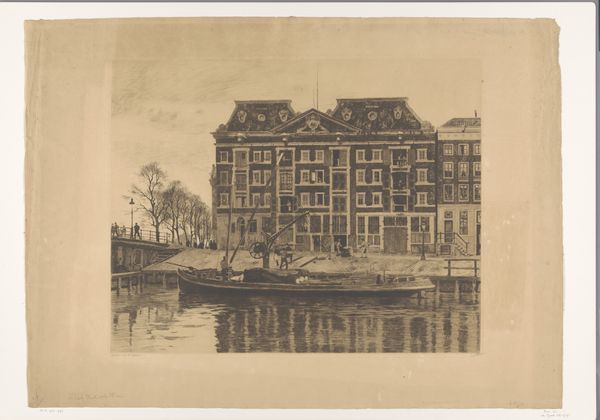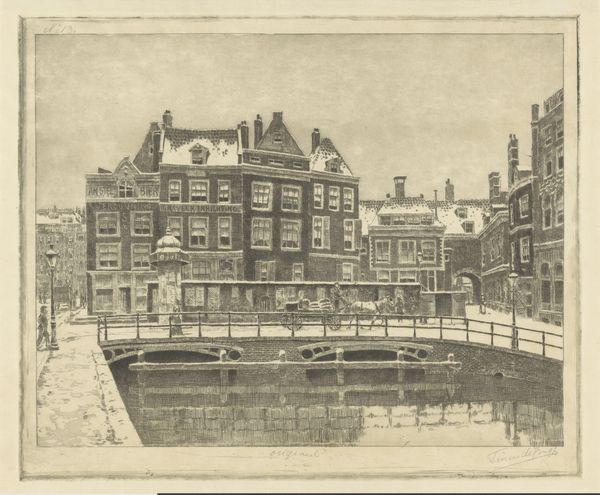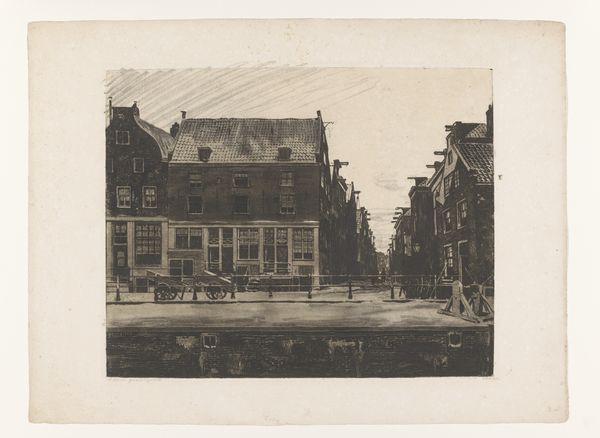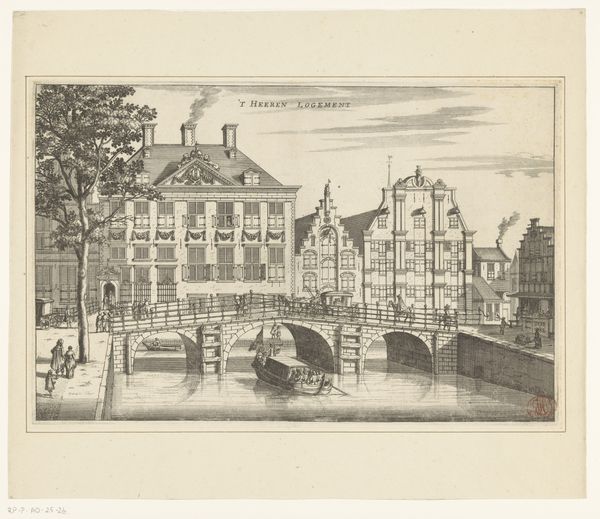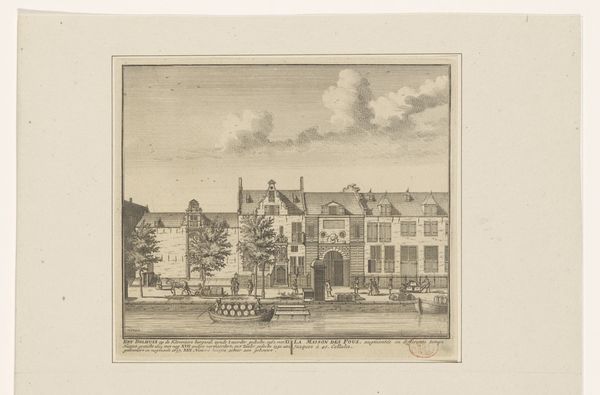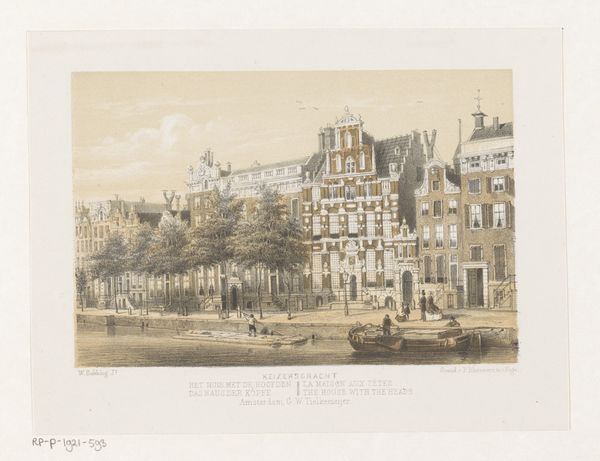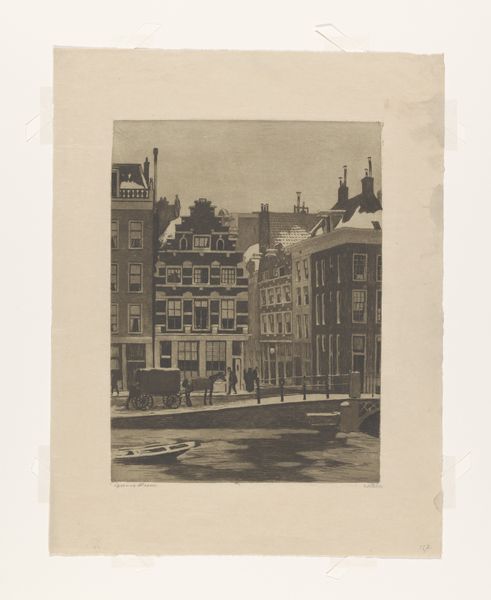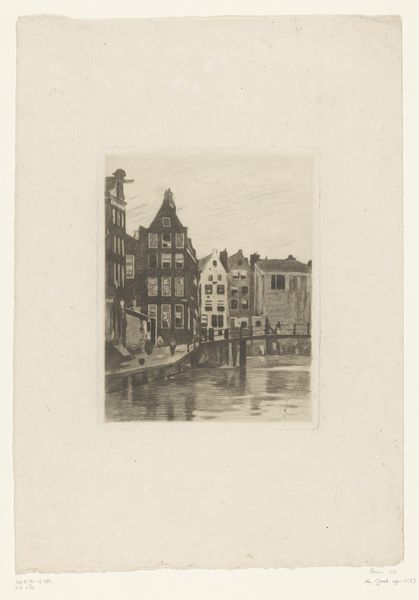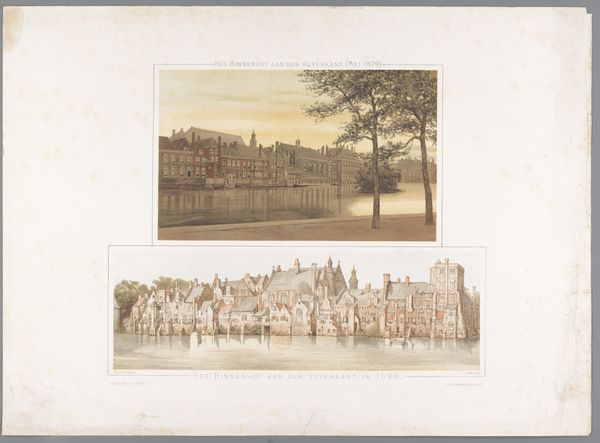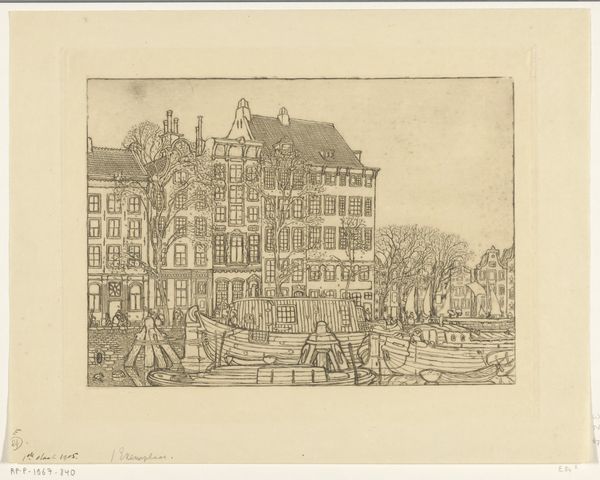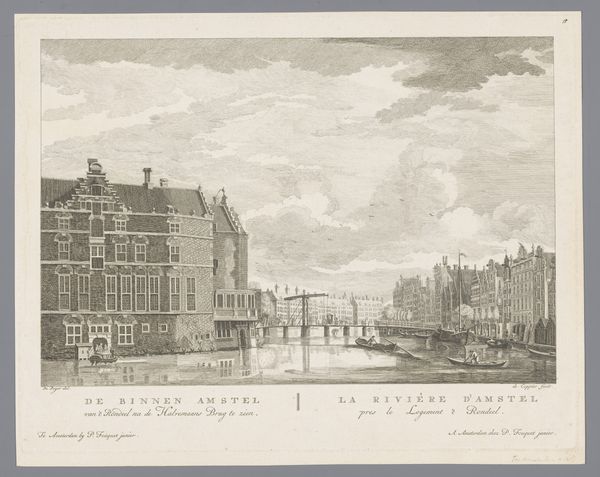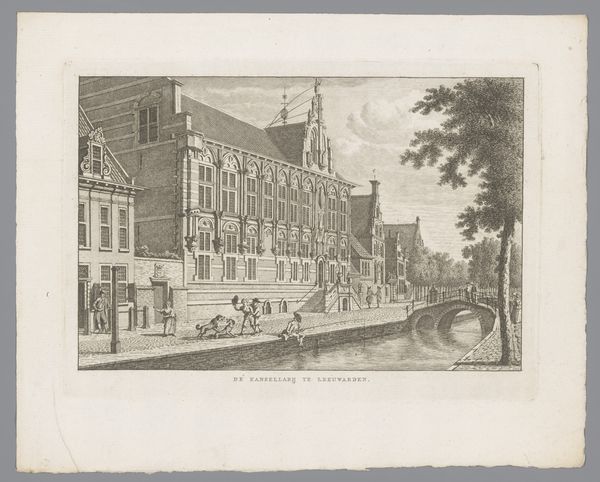
Dimensions: height 328 mm, width 397 mm
Copyright: Rijks Museum: Open Domain
Curator: Welcome. Here we have Willem Witsen's "Gezicht op het Beurspleintje in Amsterdam," or "View of the Beurspleintje in Amsterdam," created circa 1911-1912. It’s a rather evocative etching, don't you think? Editor: It is! Immediately, I am struck by its tonal harmony, primarily various shades of brown, almost monochrome, it brings to mind ideas of early photography, but then one immediately realizes the delicate hatching that describes all its forms, and feels that is what actually shapes its aesthetic language and its mood. The whole scene breathes stillness. Curator: The choice of the Beurspleintje as the subject is rather deliberate, historically speaking. This area, though perhaps a bit obscured by the soft focus, was the financial heart of Amsterdam during Witsen's time. It served as a visual shorthand for the city's economic prowess and social vitality. We’re observing a vital, commercial intersection. Editor: Yes, look at how the receding lines and the varying weights of the etched lines lead the eye. The use of perspective pulls us into the scene, creating a sense of depth that invites contemplative analysis. The darker etching that denotes the building rightmost serves to emphasize its form, but contrasts beautifully with the hazy arch. There is something very powerful to that duality, wouldn't you agree? Curator: Indeed! Witsen often captured everyday life, but he carefully selected locations that reflected significant aspects of Dutch culture and identity. The presence of laborers on the bridge and children by the docks is crucial. Witsen doesn’t just show us buildings; he displays human activity, their integration into the landscape that defines a community’s history. He elevates a place of exchange into a visual testament of local tradition. Editor: I am captured by the relationship of all shapes. The geometric form of the structures juxtaposed with the organic dynamism of the water. He used light and shadow here not just to define the volumes but as independent formal players. The lines on the canal almost vibrate with energy. The scene balances structure with a wonderful atmospheric fluidity. Curator: What I admire is how Witsen transforms the commercial center into a study of quiet urban life and light. Witsen created more than a mere illustration; he shaped a moment in time. Editor: It's a remarkable image. The analysis brings a new understanding. I’m amazed at how the etching captures a city's enduring rhythm.
Comments
No comments
Be the first to comment and join the conversation on the ultimate creative platform.
